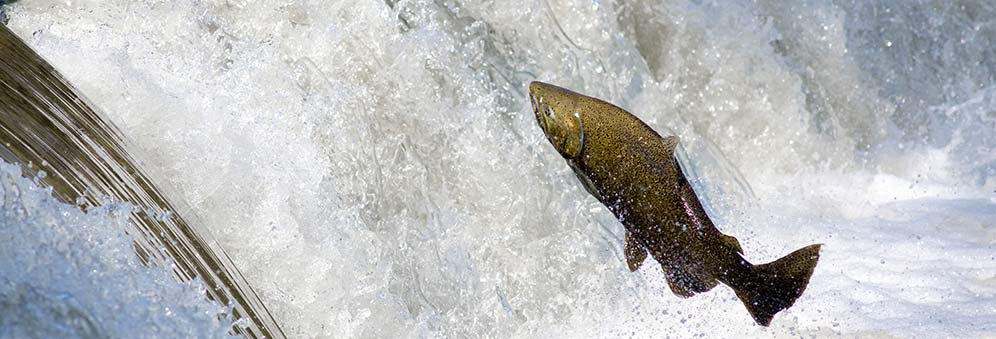Tackling climate, crime and salmon
The statistical methodology that's helping solve commercial, social and scientific problems around the world.
Analysing data in any scientific inquiry needs a model for the process being observed. But choosing the best model is a challenging task – especially in the most exploratory areas of research where present knowledge is limited and new, complex, data sources are emerging.
Ground breaking work by the University of Bristol helps researchers choose the most appropriate model using Reversible Jump Markov chain Monte Carlo (RJMCMC). This simulation methodology enables the simultaneous selection and fitting of statistical models and is now used to support vital work by governments, businesses and research institutes worldwide.
The theory behind Reversible Jump Markov chain Monte Carlo (RJMCMC) was first developed by Professor Peter Green of the University’s School of Mathematics in 1995.
Analysis depends on models
“Statistical analysis of data dominates evidence-based decision making across virtually all fields of human endeavour,” says Professor Green. “What’s perhaps less known is that successful analysis is largely dependent on selecting the right statistical model from a list of candidate models. Quite often the context will determine the model you use, especially when the process generating the data is well understood theoretically or derives from long past experience,” Green continues. “The task becomes much more difficult with novel kinds of data, perhaps involving complex data structures, or when the prior information you have is weak.”
RJMCMC addresses this issue because it is a simulation-based Bayesian methodology for simultaneously selecting and fitting statistical models – or for fitting models that have variable-dimension parameters.
Widespread impact
The impact of the research since it was first published has been widespread. Twenty years after its introduction, Green’s paper has been cited over 4489 times in academic literature. The vast majority of citations are from outside statistics and mathematics.
RJMCMC is also being used for substantive applications outside academic research. The Canadian Government’s Defence Research and Development Agency, for example, has designed an innovative inference methodology to address a critical capability gap that emergency services encounter when managing chemical or biological weapon attacks.
The US National Oceanic and Atmospheric Administration (NOAA), meanwhile, is developing climate and Earth System models to make climate projections and seasonal climate predictions.
RJMCMC is also being applied to a range of other analytical problems that impact the way we live and protect societies. In ecology, the US Fish and Wildlife Service is using RJMCMC to compare models that assess the effect of transporting water from rivers on the survival of juvenile salmon – an issue that’s not only linked to sizable declines in fish, but is causing local conflicts about how the water is used and divided up.
In social science, the Reserve Bank of India is attempting to determine relevance of socio-economic variables in determining level of crimes in Indian states, particularly instances of rape.
French company SORMEA is also using RJMCMC to construct an automatic multi-vehicle tracking system for measuring vehicle flows on crossroads and roundabouts, which could ultimately improve road safety.
Twenty years and counting
Since 1995, Professor Green has further developed the methodology of RJMCMC in collaborative research projects, resulting in several further publications that are also stimulating further research. Twenty years on from its first appearance, RJMCMC is still gathering momentum and delivering impact that is felt around the world.

